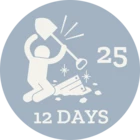Though experienced with reading WFS's, I'm a little bit frustrated about reading a WFS2.0 in the FeatureReader. It seems it is not paginating. Checking the WFS GetCapabilities, 'FeaturePaging’ is not mentioned.
I want to query the WFS with a polygon. So that is my initiator. But I'm not sure whether the results exceeding the 50k or 100k or even 200k. That's why I want some sort of ‘FeaturePaging’.
Anyone an idea on how to solve my issue? It's probably simple, but I can't see it at the moment.






